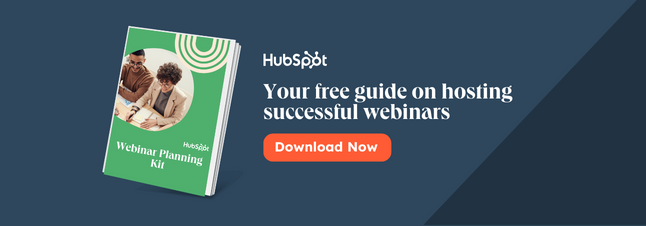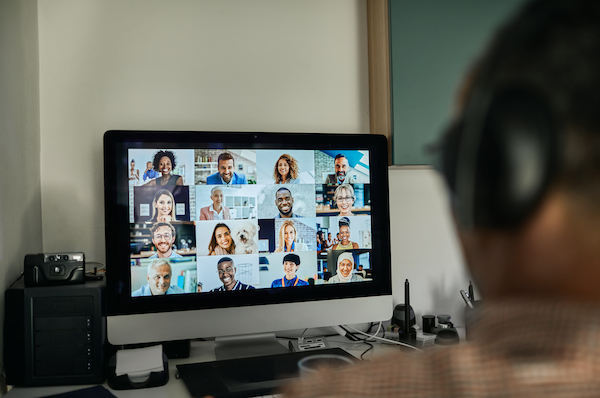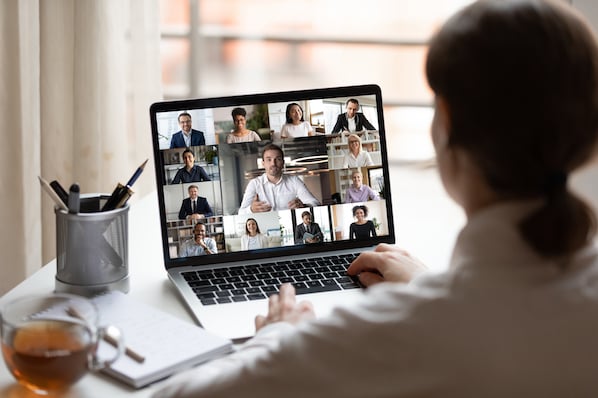I often poll marketing audiences about their biggest webinar challenges. Almost every time, I hear that their biggest challenge is on driving registration -- in a recent poll, we found that 42.9% of respondents had the biggest trouble with getting people to register for their online event.
Why is driving webinar registration such a challenge for marketers?
Perhaps the biggest explanation for this issue is the fact that our prospects are now busier than ever, making it very hard for them to take the time to tune in at certain day at a certain time. They're also bombarded with tons promotional emails, making them wary of any kind of advertising -- social or otherwise.
So how can we get them to sign up for our webinars if we can’t even get them to read emails promoting them? The key is catching your target audience at a moment of receptivity with a message that resonates -- it's both an art and a science.
The Science of Getting People to Register for Webinars
As marketers, we rely too often on a static process to promote our events: a single email (sent multiple times) and perhaps a few tweets with the name of the event and a link. Depending on your brand and the appeal of the subject matter, this may be enough to capture a sufficient audience, but it certainly leaves a lot of prospective leads behind.
Truly innovative marketers are now experimenting with the process of promoting their events. This includes sending out emails at the right time, promoting different types of emails (HTML, plain text and hybrid -- and with embedded videos, for example), experimenting with drop schedules and timing, and mixing up social promotions with different messages and types of outreach.
1) Send your promotional emails at the right time.
Though the best time of day and day of week to send emails depends on your business, industry, and audience's behavior, it's helpful to get an idea of when your emails are most likely to succeed (and time your sends accordingly). In our annual benchmark report that analyses thousands of webinars hosted by our customers, we found out the optimal times for sending your emails are:

2) Extend the promotional period to drop more emails.
When you look at industry best practices for when people actually sign up for webinars, there is an enormous percentage of people who sign up more than seven days before the event -- as many as 36% of sign-ups will take place more than a week out. As a result, make sure you give yourself enough time to promote the event (beyond a week) in order to improve your results.

3) Mix up email types.
Doing different types of emails in different drops is typically a very successful approach. One flow I typically recommend is to send an HTML two weeks out, a plain text email seven days out, and then an HTML email again on the day of the event. This can give the impression that the event is much larger and more significant than it first appears. This process also makes it more likely that your recipients will read one of the emails since one is different from the others in the campaign.


4) Mix up promotional messaging.
This is similar to the previous tip, but instead of email format, we’re referring to the readable content itself. While you may be delivering the same message, changing up the tone and verbiage can help cut through the noise. You might try taking a more personal tone with your messaging in one message, but keep to a more formal tone with others.
The Art of Promotional Content
The art of driving webinar registration comes in how we design our promotional content. For many companies, all of the creative energy gets put into the webinar presentation, not the invitations. This leads to the classic “If a tree falls in the forest …” dilemma. Your content doesn’t exist if no one knows about it.
Writing compelling promotional content is the first exposure your prospects will have to your message. It’s the doorway to your webinar. To make sure you're creating compelling promotional copy, make sure your writing has at least one of the following elements:
1) Upsets the status quo.
Great promotional material is always going to galvanize action from the recipient, and an easy way to do this is to deliver content with a headline that stops people in their tracks. If your material tells audiences what they expect or already understand, it’s easily glossed over. But a contrarian headline or lead sentence can snag the interest of a recipient. For example, a webinar touting the title “Big Data as We Know It Is Dead” is sure to garner interest. Just be sure that the content of your webinar actually delivers on that headline -- otherwise you could alienate the registrants you worked so hard to earn.
2) Promises change.
In this case, we’re again referring to the lead or headline of your promotional material. Succinctly, you need to articulate exactly what prospective attendees will be able to accomplish once they’ve attended your webinar. How much will they save? What will they achieve? How will their lives or businesses be better? If you can deliver this message in a brief format, more people will be likely to attend your event.
3) Challenges common beliefs.
While this may seem similar to “Upsets the status quo,” there are subtle differences, primarily related to phrasing. Challenging common beliefs means posing a question related to the recipients’ day-to-day experiences that challenges them to re-think a foregone conclusion. “Do you really need analytics to be a successful marketer?” would be a question that might make a recipient stop and wonder what an event is all about.
4) Titillates.
The pure definition of “titillate” is to “excite agreeably,” and this can be an effective strategy, provided that it’s combined with substantive information that will further compel the recipient to attend your webinar. Perhaps this may take the form of a preview or teaser of the event, so your audience gets a sense of what to expect from the event itself. One approach is to provide background on the expertise of the speakers and/or presenters who will be running the event.
5) Addresses known pain points or needs.
This may appear obvious, but for many promotional materials, a clean, clear description of how you’re going to address a common problem is the most effective means of getting recipients to pay attention. If a target spends all day trying to install X and then sees a webinar that says “How to Install X Three Times Faster,” that person is going to consider that event carefully.
Successful webinar promotions artfully and strategically capture people’s attention, whether it’s through a subject line that threatens the status quo, an opening email sentence that promises change, or a tweet that spurs the imagination. As marketers we have to be just as creative promoting our events as we are delivering them. It’s a little bit art, and it’s a little bit science, but mostly it’s just great marketing.
Want to learn more about promoting webinars? Our recent master class hosted by Mark Bornstein of ON24 and Lisa Toner of HubSpot is available on demand: http://hubs.ly/y0K6Vq0
Webinars












![How to Write a Webinar Script [+ Template]](https://53.fs1.hubspotusercontent-na1.net/hubfs/53/181_Write-a-Webinar-Script.png)